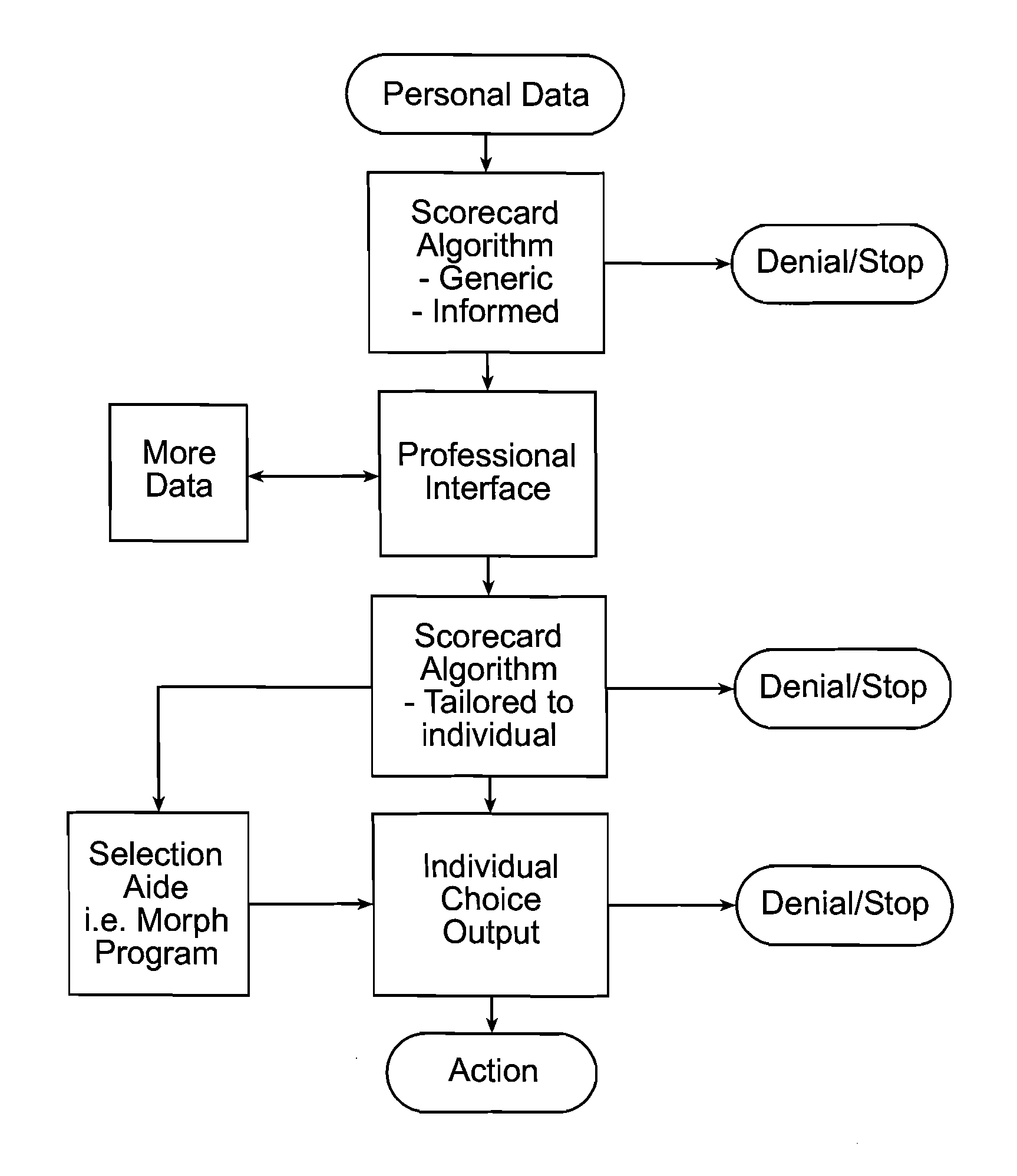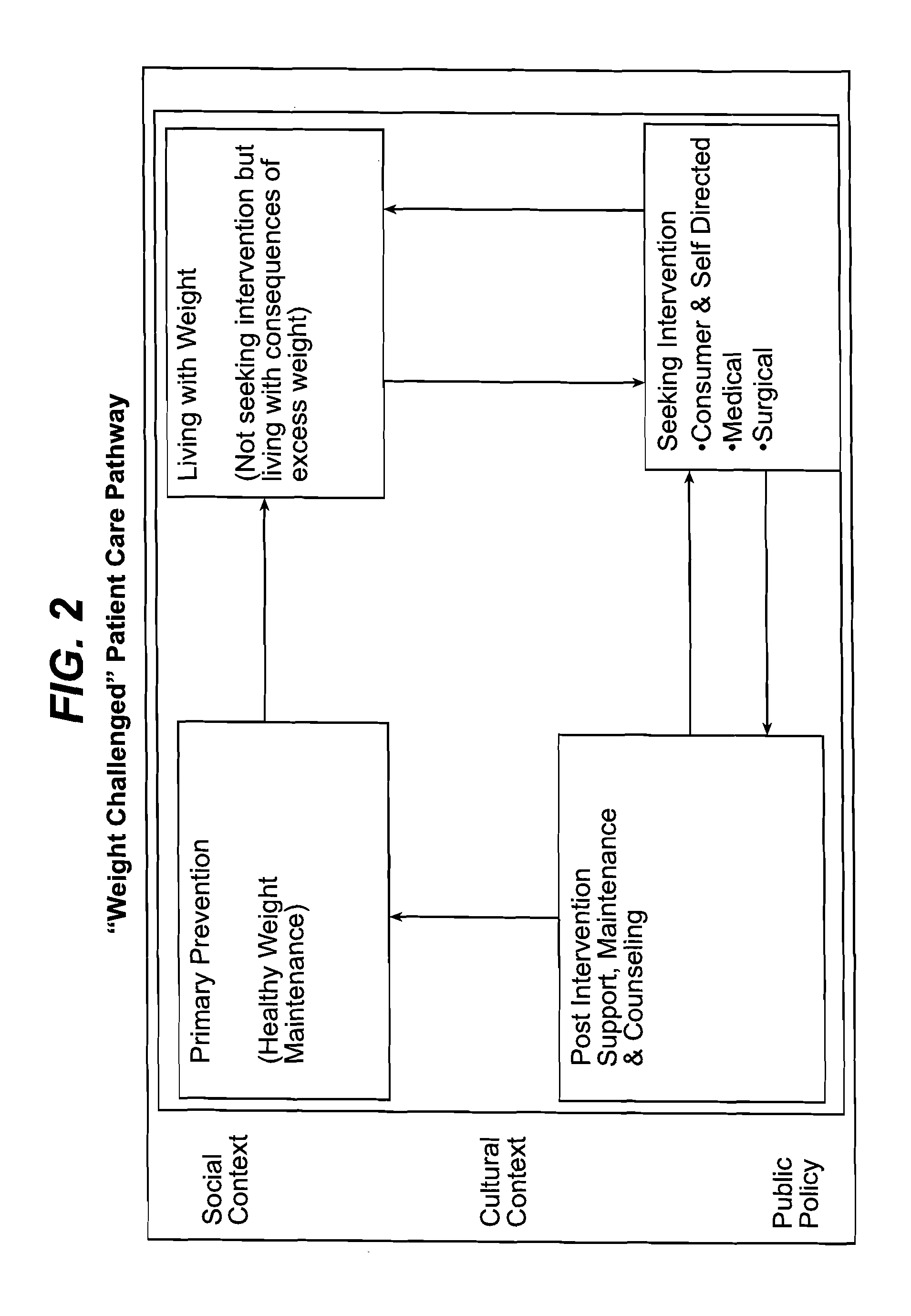Method and Apparatus of Assessing Need for Health Care and Facilitating The Provision of Health Care
a technology for consumers and health care, applied in the field of apparatus and methods for assessing consumers' needs for health care, can solve the problems of substantial decline in quality of life, substantial number of overweight and obese people not seeking care, and inability to maintain a healthy weight, so as to improve the risk of disease, improve the effect of predictability, and provide awareness and education
- Summary
- Abstract
- Description
- Claims
- Application Information
AI Technical Summary
Benefits of technology
Problems solved by technology
Method used
Image
Examples
first embodiment
[0037]Referring now to FIG. 5 a first expression of a health care assessment system includes step one, measuring participant health data, including for example, anthropomorphic data, physiological data, family history, health history and prescription drug use. The data can be measured by many means including requesting input into a programmable, microprocessor-based electronic controller, or by having technicians weigh and measure the participant, or by having measurement devices attached to an electronic controller. The electronic controller may be located in a medical professional setting, such as a hospital, physician's office, medical center, or in a retail setting, such as a pharmacy, mall, or health clinic or alternatively in the home.
[0038]Such measurement devices could be, for example, white light devices that create a computer scan, or more simple devices such as scales and tape measures. Step one could also include input on the psychological state of the participant, such ...
second embodiment
[0063]Referring now to FIG. 6 the invention includes collecting information about waist circumference, hip circumference, and gender by any of various means, step one. Psychological information about the participant's state of well-being and previous experience the participant has had concerning weight can also be collected.
[0064]Step 2 requires a decision about the algorithm to be used based on the participant's gender. Step 3 (not shown) could require further choice of refinement of algorithm based on another factor or set of factors as previously discussed. If, for example, the participant has a certain height or is from a certain part of the world, a different algorithm may be required because of a different body response because of height or different dietary or lifestyle habits in various parts of the world. Refinement is limited only by the expertise of clinical researchers. Certain genetic markers could be envisioned as a determining factor, as further example.
[0065]In the n...
PUM
 Login to View More
Login to View More Abstract
Description
Claims
Application Information
 Login to View More
Login to View More - R&D
- Intellectual Property
- Life Sciences
- Materials
- Tech Scout
- Unparalleled Data Quality
- Higher Quality Content
- 60% Fewer Hallucinations
Browse by: Latest US Patents, China's latest patents, Technical Efficacy Thesaurus, Application Domain, Technology Topic, Popular Technical Reports.
© 2025 PatSnap. All rights reserved.Legal|Privacy policy|Modern Slavery Act Transparency Statement|Sitemap|About US| Contact US: help@patsnap.com



